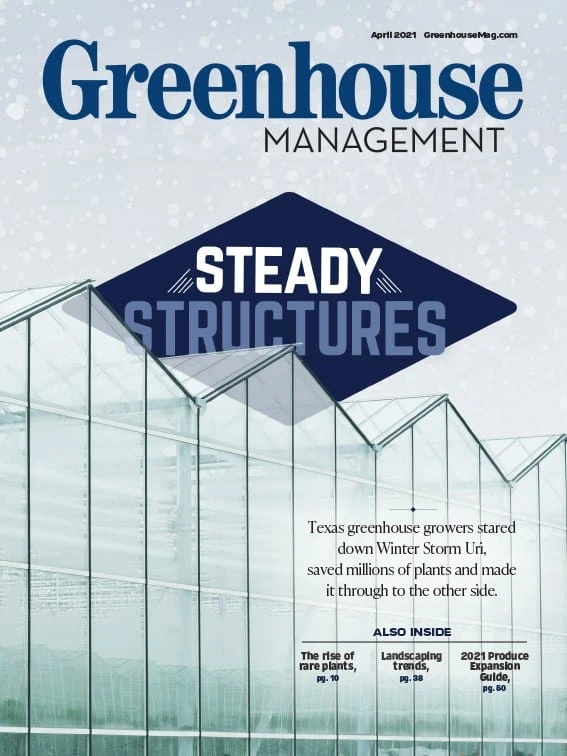
Greenhouse Management: How did you become interested in IPM in the first place?
Alex Traven: I studied at Cornell and Cornell has a really good greenhouse management program. But the most valuable things I did there was a lot of the entomology work. That’s what really gave me a lot of the background to be able to understand the ecology that I was working with there. Another way I’ve come to really describe how I think about the whole program is that I never really learned or grew in a conventional way. I’m very much a native of biocontrol, so for teaching people about biocontrol, there’s always this big hurdle in switching from a conventional mindset to a biocontrol mindset, at least in terms of how proactive you need to be, how you don’t have to always achieve the hero moment using biocontrol.
GM: How do you and the people you work with develop an IPM program and update it as needed?
AT: It’s a lot of looking at how a crop grew last year and saying, ‘Here’s where I could have intervened on this, or I should have intervened on this and I failed to.’ Having made the mistake in the past is definitely a really good way to make it less likely that you’re going to make it in the future. One of the things that has been pivotal in our system is that we’ve been doing things this way for so long that we have an established community of insects and invertebrates in the greenhouse that do a lot of work for us without having to be released. For example, there’s a lot of biocontrol agents that I have not released, or at least have not in several years, that we just have a population that occurs naturally and we’ve created this environment they can thrive in.
GM: Peace Tree grows both ornamental crops and vegetable crops. Does that complicate how one develops a comprehensive IPM strategy?
AT: It definitely does complicate things. We have a lot of different overlapping pest complexes and it’s definitely complicated things a lot over the years. I would say we’ve been simplifying our offerings and what we grow over the past few years. As business has picked up, the thing that’s picked up are herbs, vegetables, lavender and areas that we’ve moved away from like the really exotic, unusual ornamentals plants that you have to keep stock of yourself. We’re not doing a lot of forcing anymore either. And all of that involved bringing in a lot of plant material from all sorts of other places, and it was always a source of outside pests — pests that are resistant to chemicals or really difficult to manage with biocontrols. What also makes it work is that I’m not just relying on one beneficial insect to control any one given pest. I’m making sure I’ve got this really balanced ecosystem that’s going to get them at various life stages.

Explore the April 2021 Issue
Check out more from this issue and find your next story to read.
Latest from Greenhouse Management
- Super Charged Moon Juice from Moon Valley Nurseries now available nationally
- 2025 Proven Winners Horticulture Scholarship applications now open
- How to improve inventory and shipping management in the greenhouse
- Leading Women of Horticulture: Anna Ball, Ball Hort, and Terri McEnaney, Bailey Nurseries
- GM CEA HERB Part 2: A guide to increasing the sowing density of culinary herbs
- GM CEA HERB Part 1: Best practices for producing culinary herbs in controlled environments
- USDA fires experts on invasive pests, including Asian citrus psyllid, chilli thrips
- CEA Alliance celebrates bipartisan introduction of Supporting Innovation in Agriculture Act





